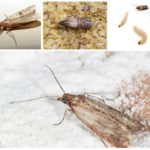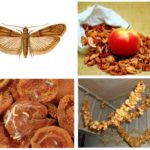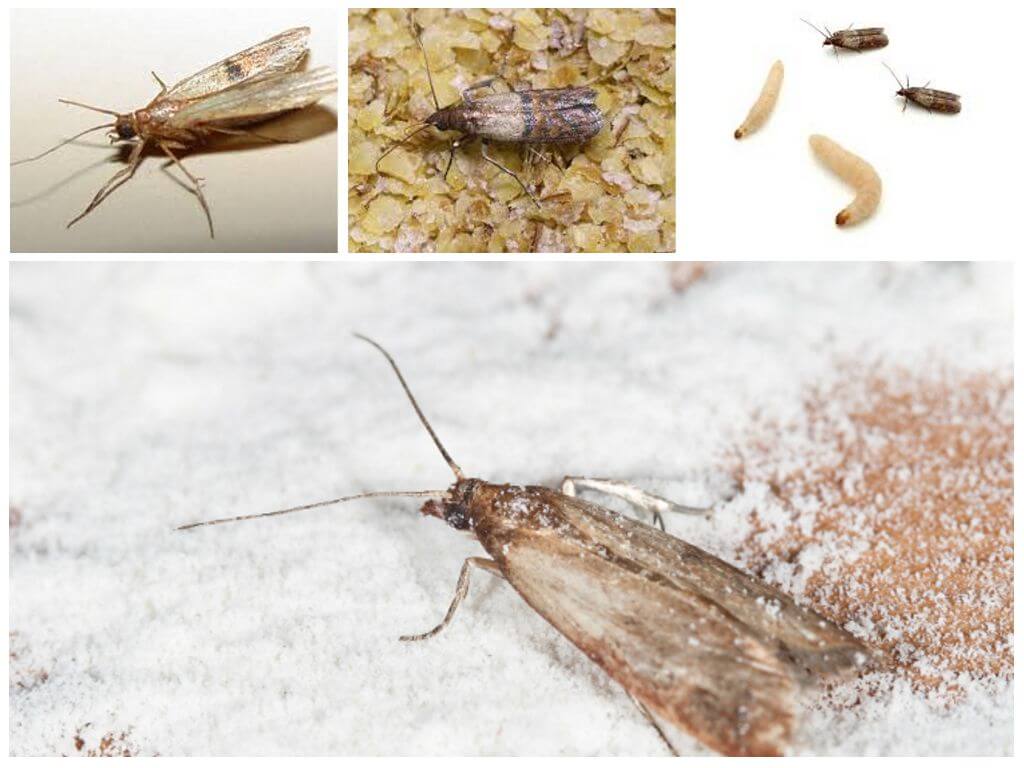What to do if a mole starts up in a dried fruit
Content
- Food moth
- Moles in dried apples
- Folk remedies for moth
Dried fruit compote is very useful and is an excellent alternative to packaged juices, which are usually full of dyes, preservatives and sugar. Therefore, in the home of those who care about their health, there are always dried apples, pears, dried apricots and other fruits. But if you keep them wrong you can expect an unpleasant surprise: one day a flying insect appears in the closet - a fruit moth.
Insect features
It is difficult to get rid of the fruit moth - it is not so easy to find this voracious insect at the very beginning. The fact is that adults are already flying around the kitchen, but they don’t eat anything at all. Their main goal is to find a secluded place and lay eggs there, from which they will be taken out in a few days. moth larvae. Here they turn tasty dried fruits into real dust.
Learn fruit moth can be characteristic strips at the tips of the wings. It is small in size, only about 1 cm long. See what the fruit moth looks like in the photo so that if it appears you can identify the enemy by moth butterfly look. Grown up larvae can be seen with the naked eye, they are not like small worms. They are derived from eggs hidden in a cocoon, as if a retinue of a cobweb.
Start a fruit moth can not only in dried fruit. A great place to live for her are bags of cereals or flour. Moth larvae prefer to eat sweet fruit, but the butterfly eggs can be laid in a dry place next to them, and the hatched larvae can crawl on their own to a treat.
Fortunately, they do not crawl over long distances, so a fruit moth can start in an apartment only in one of the following ways:
- fly through the ventilation ducts and settle in the cabinet with products;
- get into the house with a new batch of poor quality dried fruit;
- fly into the open window, especially in the evenings, when the lights in the windows.
Therefore, it is quite realistic to protect oneself from its appearance and it is much easier to do this than to get rid of moths in dried fruits.
How to protect against moths
To the mole in the dried fruit does not start, you must carefully inspect them before buying. Quality dried fruits have a smooth surface, without holes and other visible damage. Holes are made by moth larvae, biting into the pulp of dried fruit.
It is necessary to install a grid with small cells on the ventilation openings, which will freely pass the air, but retain the mole and other small insects. So that the net does not interfere with the normal operation of the ventilation and does not impede the air circulation, it must be regularly rinsed or wiped with a damp cloth that is better moistened with acetic acid.
In the cold season, the mole does not fly down the street and, accordingly, it can penetrate the window. But in the spring and summer to protect the apartment from pests will help the installed moxit net, which will not allow them to penetrate from the street and spoil your products.
How to store dried fruits
If dried fruits are properly stored, then the chances that the fruit moth will spoil them can be practically reduced to zero. It is definitely impossible to dump everything into one big pile or wrap it in a plastic bag. These are ideal conditions for mold and dried fruit will deteriorate so quickly. Small moth larvae can crawl through even a very small hole, which is completely invisible, but after a while it will be revealed that all products are spoiled.
Keeping dried fruits from moths at home will help follow these rules:
- it is better to keep freshly bought ones at least at the first time separately - send them to a kind of quarantine;
- for storage of dried fruits are best suited glass or metal containers with a tight lid (metal cover the bottom of the paper!);
- once in 7-10 days containers with dried fruit and if there are cocoons, larvae or adults mol, throw away everything that was in the container, and process it carefully.
In summer, dried fruit can be stored in wooden boxes on the balcony - the pest does not like sunlight and air currents, therefore such conditions are absolutely inappropriate for her. At the same time, dried fruits will dry out, moisture will leave them, which could accumulate during home storage.
On a note!
If a mole starts up in dried fruits, then even after you have removed all the spoiled ones, you will have to take it as a rule to carefully inspect the remaining intact products before consuming them. Fruit moth eggs or newly formed larvae you might not notice. But they will grow and the insect will continue the breeding cycle.
How to deal with moth
Funds to combat fruit moths a lot. Moreover, it is not industrial that are better suited for this, which contain poison, harmful to humans, but folk methods. But first of all it is necessary to empty all cabinets and carefully recheck all the contents.
After all damaged products are thrown out, they are properly packed in new ones; you must thoroughly wash all the cabinet surfaces (not just the shelves!) With ordinary food vinegar diluted in half with water.Special attention should be paid to the far corners and the back surface of the shelves - this is where the fruit moth most often lays cocoons with eggs.
Then on the shelves it is necessary to decompose the means that the fruit moth does not like:
- dry orange or tangerine peels;
- bags of spices: allspice, coriander, cinnamon;
- dry laurel twigs or teabags with leaf;
- herbal bags: lavender, mint, wormwood, oregano;
And we must bear in mind that all these folk remedies for moth they do not kill, but only repel the insect, and over time the larvae can adapt to them. Therefore, in order to guarantee the preservation of products, it is better to alternate them about once every 2-3 months.
It is useful to put an open container with salt in the cabinet. It will absorb excess moisture, creating a microclimate too dry for moths. At the same time, the salt will fight against the appearance of mold and will not let it dry out to dried fruits. Observance of these simple rules will reliably protect your home from a fruit moth, and you can always enjoy your favorite delicacies.











